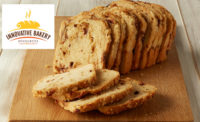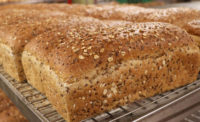Convenient, on-the-go breakfast biscuits and cookies

Our morning routine has seen some changes over the past decade. One shift that has significantly impacted product manufacturers is the ongoing move away from breakfast cereals. Mintel has predicted that U.S. shoppers spent $9.5 billion on breakfast cereal during 2015—down 7 percent from category spending in 2012 (see “Puffs, flakes and dollars: why your breakfast cereal costs so much” from NBC business news, a piece that also includes some poignant perspectives on the increasing cost inputs for breakfast cereal and the increased competition for morning share of stomach).
While sales of breakfast cereal continue to slip, other products have stepped into the gap to provide morning nourishment. Two mega-trends within food today squarely impact breakfast products: on-the-go convenience and better-for-you nutritional profiles. People want their breakfast speedy, mess-free and easily transported, and they also want to feel good about what they’re eating, with portion-controlled foods that pack multiple key nutrients with strong satiety. These consumer currents have directly factored into the success of the breakfast biscuit and cookie segment.
Kraft Foods (today Mondelēz International) pioneered the segment with its Petit Déjeuner product in France, and quickly spread the products elsewhere across Europe as belVita biscuits. Then, in 2011, the company brought the breakfast biscuit segment to the U.S.
As we reported in our 2015 State of the Industry article on cookies, “Cookies market sports new flavors,” Mondelēz saw strong sales of Nabisco belVita, with IRI, Chicago noting a 34.10 percent increase in dollar sales for the 52 weeks ending April 19, 2015, hitting $193.5 million. Globally, during 2014, the belVita brand brought in $600 million in revenue, per Mondelēz. During 2015, the line saw extension with belVita Bites and a new flavor, Cranberry Orange, in the “original crunchy” line. Mondelēz also introduced belVita to China in 2015.
Of course, the idea of serving a cookie-style baked snack at breakfast (or any time…) is nothing new. Anyone over the age of 40 likely recalls the classic Stella D’oro Breakfast Treats commercial from the 1970s and ’80s (Stella D’oro is now a Snyder’s-Lance brand). But belVita was the first commercial product specifically formulated with better-for-you rubrics designed for sustained energy through the morning via slowly digestible starch.
And good ideas like to grow. Snack manufacturers like PepsiCo, General Mills, Post Foods, Snyder’s-Lance and Kellogg Co., along with private label retail lines, have jumped into the fray:
- Quaker Breakfast Cookies
- Erin Baker’s Breakfast Cookie
- CVS Gold Emblem Abound Crunchy Oat Breakfast Biscuits
- Nature Valley Breakfast Biscuits
- Weetabix Breakfast Biscuits on the Go (U.K.)
- Nabisco belVita Bites
- Post Honey Bunches of Oats Breakfast Biscuits
- Lance Quick Starts
- Kellogg Nutri-Grain Breakfast Biscuits
Product diversification through addition of nutrition-forward ingredients could help drive differentiation in an increasingly crowded market. Several ingredient trends that make sense for breakfast cookies and biscuits include:
- High levels of key nutrients like fiber and protein
- Sprouted grains—increasing buzz on this approach, which boosts nutrient levels of the grain
- Probiotics and prebiotics—a combined approach for better gut health
- Inclusion of seeds like chia and hemp
- Diverse grains, including gluten-free formulations
- Use of real fruit pieces to boost nutritional properties
Convenient breakfast should continue to trend well moving forward. Nielsen just reported that “Shelf Stable Convenient Breakfast” was the top dollar sales growth segment in grocery for 2015 (see “Tops of 2015: U.S. Grocery”). As people tend to spend more food dollars away from home, manufacturers of breakfast biscuits and cookies will need to continue to implement strong formulation rubrics and marketing messages in order to keep sales momentum in their favor.
Looking for a reprint of this article?
From high-res PDFs to custom plaques, order your copy today!








